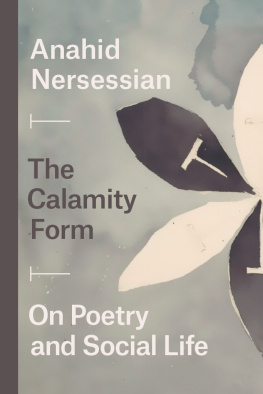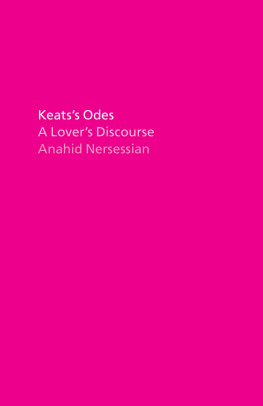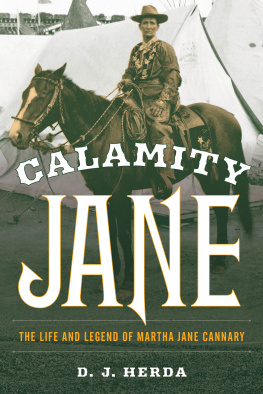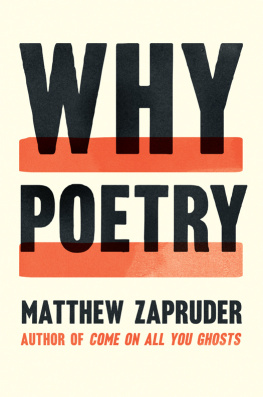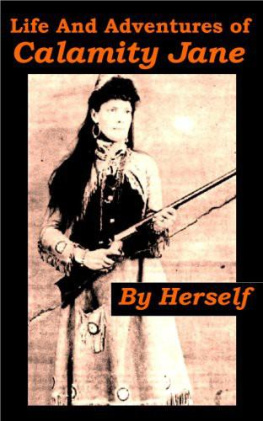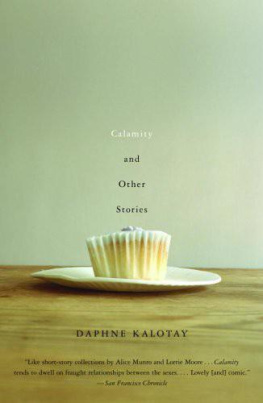Anahid Nersessian - The Calamity Form: On Poetry and Social Life
Here you can read online Anahid Nersessian - The Calamity Form: On Poetry and Social Life full text of the book (entire story) in english for free. Download pdf and epub, get meaning, cover and reviews about this ebook. year: 2020, publisher: University of Chicago Press, genre: Science. Description of the work, (preface) as well as reviews are available. Best literature library LitArk.com created for fans of good reading and offers a wide selection of genres:
Romance novel
Science fiction
Adventure
Detective
Science
History
Home and family
Prose
Art
Politics
Computer
Non-fiction
Religion
Business
Children
Humor
Choose a favorite category and find really read worthwhile books. Enjoy immersion in the world of imagination, feel the emotions of the characters or learn something new for yourself, make an fascinating discovery.
- Book:The Calamity Form: On Poetry and Social Life
- Author:
- Publisher:University of Chicago Press
- Genre:
- Year:2020
- Rating:5 / 5
- Favourites:Add to favourites
- Your mark:
- 100
- 1
- 2
- 3
- 4
- 5
The Calamity Form: On Poetry and Social Life: summary, description and annotation
We offer to read an annotation, description, summary or preface (depends on what the author of the book "The Calamity Form: On Poetry and Social Life" wrote himself). If you haven't found the necessary information about the book — write in the comments, we will try to find it.
The Calamity Form: On Poetry and Social Life — read online for free the complete book (whole text) full work
Below is the text of the book, divided by pages. System saving the place of the last page read, allows you to conveniently read the book "The Calamity Form: On Poetry and Social Life" online for free, without having to search again every time where you left off. Put a bookmark, and you can go to the page where you finished reading at any time.
Font size:
Interval:
Bookmark:
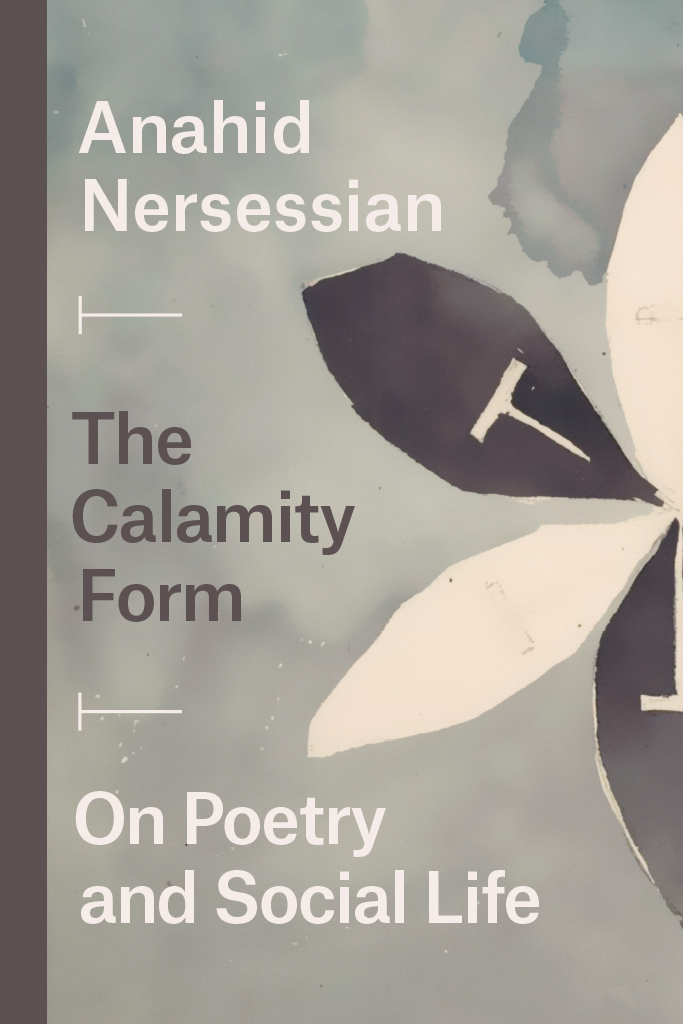
Anahid Nersessian
The University of Chicago Press
Chicago and London
The University of Chicago Press, Chicago 60637
The University of Chicago Press, Ltd., London
2020 by The University of Chicago
All rights reserved. No part of this book may be used or reproduced in any manner whatsoever without written permission, except in the case of brief quotations in critical articles and reviews. For more information, contact the University of Chicago Press, 1427 East 60th Street, Chicago, IL 60637.
Published 2020
Printed in the United States of America
29 28 27 26 25 24 23 22 21 20 1 2 3 4 5
ISBN-13: 978-0-226-70128-8 (cloth)
ISBN-13: 978-0-226-70131-8 (paper)
ISBN-13: 978-0-226-70145-5 (e-book)
DOI: https://doi.org/10.7208/chicago/9780226701455.001.0001
The University of Chicago Press gratefully acknowledges the generous support of the University of California, Los Angeles, toward the publication of this book.
Library of Congress Cataloging-in-Publication Data
Names: Nersessian, Anahid, 1982 author.
Title: The calamity form : on poetry and social life / Anahid Nersessian.
Description: Chicago : University of Chicago Press, 2020. | Includes bibliographical references and index.
Identifiers: LCCN 2019053423 | ISBN 9780226701288 (cloth) | ISBN 9780226701318 (paperback) | ISBN 9780226701455 (ebook)
Subjects: LCSH: Wordsworth, William, 17701850Criticism and interpretation. | Keats, John, 17951821Criticism and interpretation. | English poetry18th centuryHistory and criticism. | RomanticismEnglandHistory and criticism18th century. | Figures of speech.
Classification: LCC PR571 .N47 2020 | DDC 821/.709dc23
LC record available at https://lccn.loc.gov/2019053423
 This paper meets the requirements of ANSI / NISO Z39.481992 (Permanence of Paper).
This paper meets the requirements of ANSI / NISO Z39.481992 (Permanence of Paper).
So settle for knowing the approximate time
Because think of the alternative
And once you are actually in
the future, | pretend its the present
KEVIN DAVIES, The Golden Age of Paraphernalia (2008)
The life which surrounds us flows by from day to day in a familiar and accustomed channel. Even if it is broken, if its strongest dams are destroyedour consciousness, our feelings invariably and inevitably lag behind in their development; they do not correspond to the new; we are still in the power of what has been before. Our eye is unable to discern, to make out what is being born amidst the rumble, in the flood, amidst all the change, or in the catastrophe.
ALEKSANDR KONSTANTINOVICH VORONSKI, Art as the Cognition of Life, trans. Frederick S. Choate (1923)
Nach der damaligen Geisteslage mute notwendig lyrische Poesie der erste Vorwurf... sein.
[Given the spiritual circumstances lyric poetry was the first resort.]
KARL MARX, letter to Heinrich Marx dated 10 November [1837]
This book has two ambitions, one modest and the other more intricate. The first is to describe how four figuresparataxis, obscurity, catachresis, and apostrophework in a handful of well-known Romantic poems. The second is to spend some lightly ordered time thinking about the limits of historical materialism for literary study.
What these objectives have to do with one another is a question Im unlikely to answer to the satisfaction of even the most sympathetic readers. That they are connected or least adjacent the biography of criticism proves. The book leans often on that biography. It does so not in any reactionary spirit, nor to claim any sort of superlative status for the humanities. It simply assumes literary criticism to be the best way to understand literature and is interested in how people have managed to do so in the past. This is a far cry from saying that close reading, structuralism, or scansion is the best or even a good way to understand other aspects of the world. My discussion is grounded by the belief that the worlds contents are ontologically pluralthat they have different, sometimes overlapping ways of being. It is grounded likewise by the belief that any programmatic confidence in materialism as the theoretical ground of anticapitalist practice must also acknowledge that some things cannot be properly grasped and need not be contained by rigid or conventional projections of its reach.
This brief preface gives an overview of the books themes and guiding principles. The themes are poetry, social life, and criticism. One guiding principle is the relative autonomy of aesthetic objects from the obligation to make sense of the world and, by extension, the relative autonomy of criticism from the obligation to explain its objects in evidentiary terms. To put it simply, art doesnt have to be about real things, and criticism doesnt have to pretend that it is. That sounds straightforward, but its a claim backed, as well see, by complicated ideas about the nature and structure of reality.
Another guiding principle is that getting a grip on what is real is made harder by the historical emergence of capital, which renders the relation between nature and structure inaccessible, in excess of any synoptic perception. When the ambiguity and imprecision of the aesthetic object meet capitals phantasmagoria, strange things happen. They get even stranger in an era rattled by the runaway surrealism of climate change, which is both the progeny and the partner of industrialization and which finds its inflection point the same place this book does. That point is located close to the end of the eighteenth century; it is defined by the separation of Nature from the facts of the labour that is now creating it, and then the breaking of Nature, in altered and now intolerable relations between men.
The Calamity Form is interested not in what art writ large can and cannot do but in the peculiar position Romantic literature takes up vis--vis history conceived as a mode of explanationthat is, as a narrative form linking effects to their causes. My argument, which concerns poetry, is this: at the same exact moment in time when the ecological and human costs of industry were becoming palpable, some poets began actively staging their own works competence, or rather its lack thereof, to the representation and analysis of the train of consequences set in motion by contemporary economic shifts. They did this, moreover, in the thick of an intensifying preoccupation with the difference between knowledge and imagination, facts and figures, the sciences and the artsa preoccupation that cannot be written off as mere ideology or self-service. There are, it turns out, good philosophical reasons to believe a poem is unresponsive to the kinds of explanatory models proffered by biologists, statisticians, sociologists, and historians. And there are good philosophical reasons to believe that literary criticism might have something important to say about a poem that cannot be reduced to or clarified by the standards of other disciplines, particularly those driven by questions of why and how.
The phrase the calamity form plays on Marxs commodity form, the great prestidigitation by which capital disguises its logic. If the materialist conception of history tries to summarize the conditions that make up the basis of every transition between various modes of production, the commodity formwhich causes the definite social relation between men to assume the fantastic form of a relation between thingssets a high hurdle between that effort and its chances for success. This is plainly true in the dead midst of the Industrial Revolution, whose violent reorganizing of the world both depends upon and generates what I will call
Font size:
Interval:
Bookmark:
Similar books «The Calamity Form: On Poetry and Social Life»
Look at similar books to The Calamity Form: On Poetry and Social Life. We have selected literature similar in name and meaning in the hope of providing readers with more options to find new, interesting, not yet read works.
Discussion, reviews of the book The Calamity Form: On Poetry and Social Life and just readers' own opinions. Leave your comments, write what you think about the work, its meaning or the main characters. Specify what exactly you liked and what you didn't like, and why you think so.

